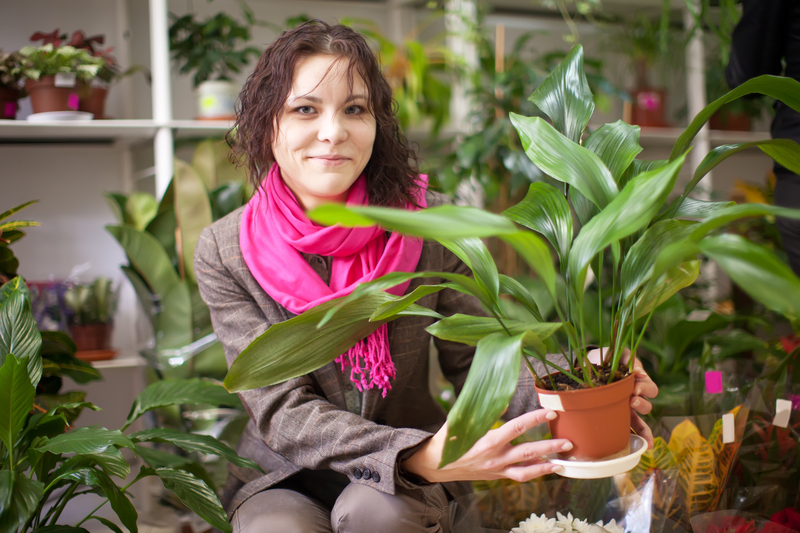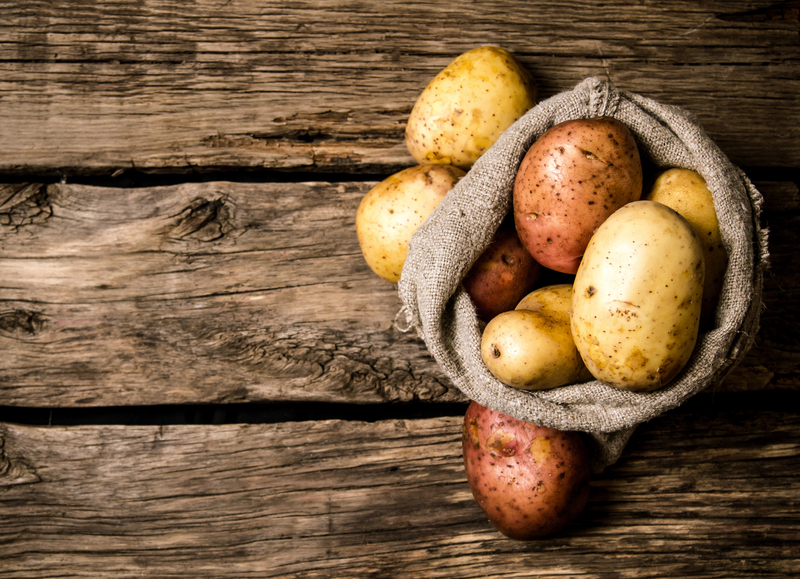Discover the key to blooming orchids
Posted on 24/09/2025
Discover the Key to Blooming Orchids: Unlock the Secrets for Lush Blooms
Orchids are renowned for their breathtaking beauty and exotic allure, but many plant enthusiasts struggle to keep these flowers thriving and blooming. If you've ever wondered why your orchid isn't flowering or how to encourage a vibrant, repeat blooming cycle, you've come to the right place. This comprehensive guide will help you uncover the key to successful orchid blooming and ensure your orchids become the centerpiece of your indoor garden.

Understanding Orchid Basics: The Foundation for Blooms
Before diving into advanced care techniques, it's essential to know the basic needs of orchids. Every healthy bloom starts with understanding your plant's natural environment and requirements.
The Orchid Family: More Than Meets the Eye
With over 25,000 species, the orchid family is one of the most diverse groups of flowering plants in the world. The most common types for home growers include:
- Phalaenopsis (Moth Orchids) - Great for beginners, known for long-lasting blooms.
- Cattleya - Famous for their showy, fragrant flowers.
- Dendrobium - Offers a wide variety of growth habits and flower shapes.
- Oncidium - Nicknamed "dancing ladies," these produce clouds of small, delicate blooms.
*Understanding your orchid variety is a vital first step in promoting prolific blooming.*
What Do Orchids Actually Need?
Orchids have a reputation for being fussy, but meeting their key needs is straightforward when you know what to offer. The essential elements for orchid flowering success include:
- Proper lighting
- Balanced watering
- Correct humidity
- Nutrition and fertilization
- Temperature control
- Right potting medium and repotting timing
The Secret to Blooming Orchids: Meeting Their Light Requirements
The most common reason orchids don't bloom is insufficient light. In their native habitat, most orchids grow in dappled sunlight, perched on trees where they receive bright, indirect light.
Signs Your Orchid Needs More Light
- Dark, floppy, or deep green leaves
- Stunted root growth
- Failure to produce flower spikes
To encourage orchids to rebloom, place them near an east or south-facing window. Use sheer curtains to filter direct sun and prevent leaf burn.
Tip: If you lack natural light, invest in full-spectrum grow lights for consistent results year-round.Ideal Light Levels for Popular Orchids
- Phalaenopsis: Medium light, avoid direct sun.
- Cattleya: Medium to bright, can tolerate some gentle direct sun.
- Dendrobium: Bright, filtered light preferred.
- Oncidium: Bright, indirect light is best.
Mastering Watering: The Fine Line for Orchid Care
Another key to orchid health and flowering is proper watering. Orchids are prone to root rot if overwatered but will not bloom if too dry.
How Often Should You Water Orchids?
- Water once a week during the growing season (spring and summer).
- Reduce to every 10-14 days in autumn and winter.
Always let the potting medium dry out partially between waterings. Stick your finger about an inch into the medium to assess moisture levels. If it feels dry, it's time to water.
Pro Tip: Water thoroughly, ensuring water drains out of the bottom of the pot to flush salts and prevent root rot.
Humidity: A Vital Component for Vibrant Orchid Blooms
Orchids love humidity. Most thrive in 50-70% humidity, much higher than typical home environments. Dry air can hinder orchid blooming potential.
- Group plants together to increase ambient humidity.
- Place pots on a pebble tray with water (but don't allow the base of the pot to sit in water).
- Frequent misting helps, but should not replace watering.
The Right Nutrition: Feeding Orchids for Optimal Blooms
Fertilizer is your orchid's best friend when used correctly. Weak, regular feeding will support new growth and repeated flowering.
Best Orchid Fertilizer Routine
- Use a balanced, water-soluble orchid fertilizer (20-20-20) at half strength.
- Feed every 2-4 weeks during active growth (spring and summer).
- Stop fertilizing when the plant is dormant in winter.
- Flush pots with plain water occasionally to prevent salt buildup.
Avoid over-fertilizing. Too much can damage roots and hamper blooming.
Temperature and Blooming: Stimulating Flower Spikes
Orchids rely on temperature cues to signal the right time to bloom. The best way to encourage orchids to flower is to mimic their natural temperature fluctuations:
- Maintain 65-75?F (18-24?C) during the day
- Allow a drop to 55-65?F (13-18?C) at night
This difference, especially in autumn, tells the plant it's time to set flower spikes. For hardy Phalaenopsis orchids, a two-week period of nighttime cooling can be the key to triggering blooms.
The Right Potting Medium: Supporting Healthy Roots and Blooms
Unlike most houseplants, orchids prefer loose, airy media that mimic their epiphytic roots clinging to trees. Poor drainage is disastrous for roots and flower production.
Best Orchid Potting Mixes
- Bark chips
- Sphagnum moss (for moisture retention)
- Coconut husk chips
- Perlite and charcoal
Repot every 1-2 years to refresh the mix and remove decaying material. A healthy root system is the foundation of blooms year after year.
Bloom Boosters: Orchid Care Tips for Repeat Blooms
- Prune spent flowers: For Phalaenopsis, cut just above a healthy node to encourage side spikes.
- Monitor for pests: Orchids are susceptible to mealybugs, scale, and mites which can sap energy and prevent blooms.
- Provide seasons: Many orchids need a rest period after flowering; lower water and fertilizer, then resume care to trigger new blooms.
- Stress strategically: Mild stress (like nighttime cooling) can sometimes initiate flowering.

Common Orchid Blooming Problems (And How to Fix Them)
Even with the best orchid care, problems arise. Here's a quick troubleshooting guide for common blooming issues:
- Leaves but no flowers: Likely too little light or not enough temperature fluctuation.
- Buds drop before opening: Sudden temperature changes, drafts, or extremely dry air.
- Yellowing/brown roots: Overwatering or poor drainage.
- Wilting spikes: Underwatering or lack of humidity.
Quick Fixes: Adjust light, ensure ideal humidity, and review your watering schedule. Patience is key--some orchids only bloom once a year!
Frequently Asked Questions About Blooming Orchids
-
How long does it take for orchids to rebloom?
Most orchids need a rest after blooming, followed by several months of growth. With proper care, expect new blooms in 6-12 months. -
Should I cut the flower spike after blooming?
For Phalaenopsis, cut above a node to encourage new spikes; for other types, cut to the base unless reproductive pods are forming. -
Can I use regular houseplant fertilizer?
It's best to use a dedicated orchid formula. Regular fertilizer may be too strong and cause root damage. -
Why is my orchid growing leaves but not flowers?
This is usually a sign of inadequate light or temperatures that are too stable year-round.
Enjoying Stunning Blooms: Make Orchids Your Floral Showpiece
Unlocking the key to blooming orchids is truly about recreating their natural conditions and being attentive to their subtle cues. By mastering light, watering, humidity, temperature, nutrition, and potting techniques, any gardener--from beginner to expert--can enjoy lush, long-lasting orchid flowers.
Remember: Every orchid is unique, and understanding your plant's specific signals is the final ingredient to repeat flowering success. Take the time to observe, adjust, and care--the reward is a tapestry of color and grace that few other houseplants can offer.
Start Your Orchid Blooming Journey Today!
With these expert-backed strategies, you're well-equipped to nurture your orchids into spectacular bloom. Whether you're tending your first Phalaenopsis or building a dazzling collection, let the adventure begin--happy growing!

